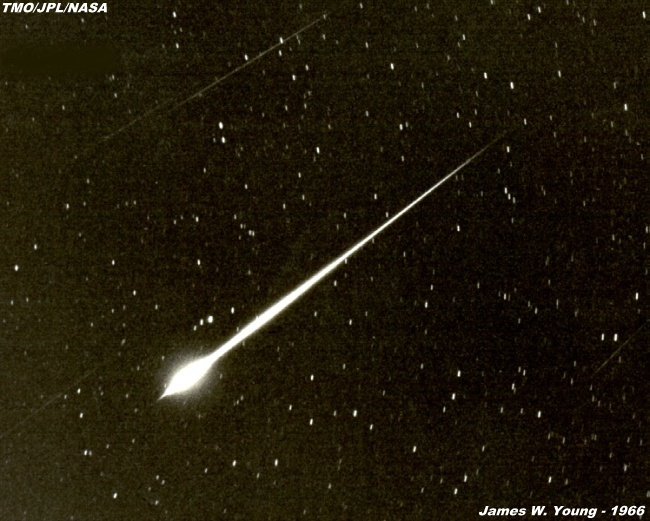A Leonid Fireball From 1966
This bright fireball meteor was photographed from
Table Mountain Observatory
during the peak of the annual
Leonid meteor shower on November 17, 1966.
That was a good year for
Leonid meteor watchers - a meteor "storm" was
produced as the Earth swept through a dense swarm of dusty debris
from the tail of comet Tempel-Tuttle.
Observer Jim Young reported a peak rate for the 1966 shower of about 50
meteors per second and recorded 22 otherwise extremely rare,
bright fireballs
like this one in the span of 90 minutes from his
California mountain top location.
Predictions are uncertain, but this year might also produce an intense
apparition of
the Leonids shower which should again peak on the 17th.
You may need to
be well placed and
a little lucky to see the shower at its maximum, but
Leonid meteors
should be easy to see in dark skies -
particularly in early morning hours - for two or so days before and
after the peak.
How do you watch
a meteor shower?
Get a comfortable lawn chair and a warm jacket ... go outside and look up!




